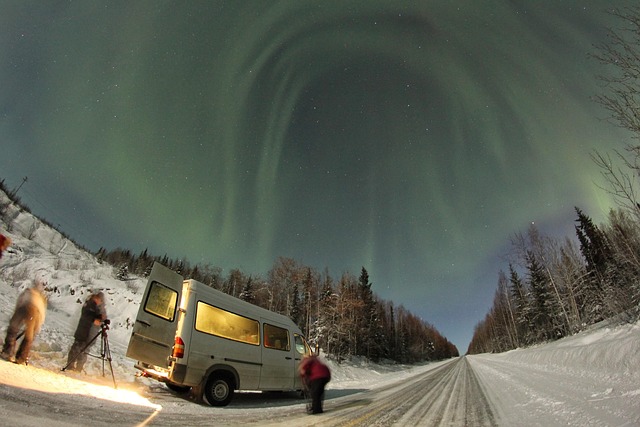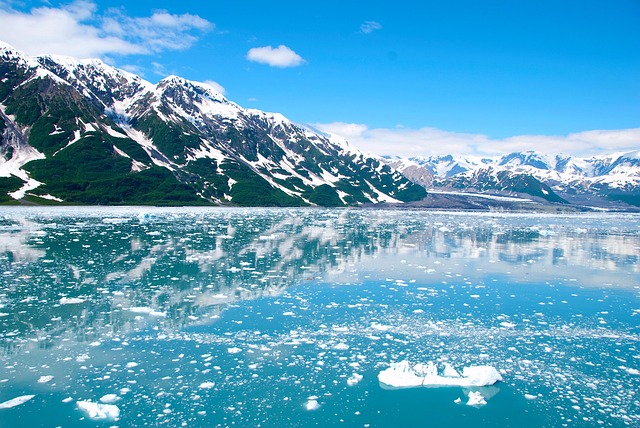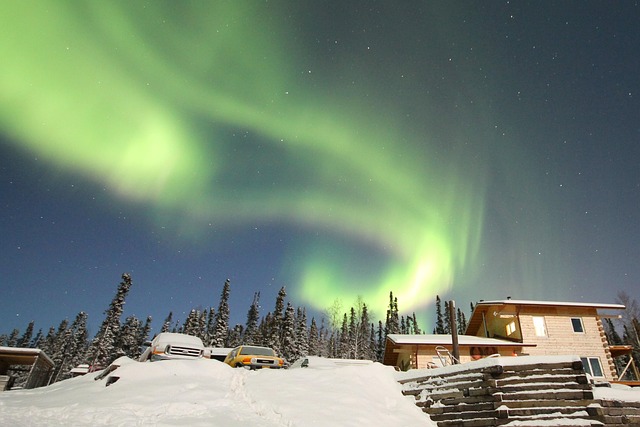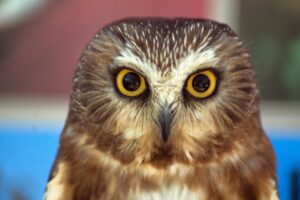The number one reason to visit Alaska in winter is to witness the “sky” part of the dream: the Aurora Borealis, or Northern Lights.
The long, dark nights of winter are not a drawback; they are the canvas. From September to April, Alaska offers one of the most consistent and spectacular aurora shows on the planet.

What is it?
These ethereal ribbons of green, purple, and red light are the result of solar particles colliding with the Earth’s atmosphere. To see it in person is a spiritual, humbling experience that photos can never fully capture.

How to See the Northern Lights:
- Go to Fairbanks: This city in Alaska’s interior is considered one of the best places on Earth to see the aurora. It sits directly under the “Auroral Oval,” a band of high aurora activity.
- Get Away from the City: Light pollution is your enemy. Book a “northern lights tour,” stay in a remote lodge, or simply drive 30 minutes outside the city and find a dark pull-off.
- Be Patient: The lights are fickle. They tend to be most active between 10 p.m. and 2 a.m. Plan to stay for at least three to four nights to maximize your chances.
- Stay Warm: You will be standing outside in the cold for hours. This is where your packing (more on that later) becomes critical.

The “Snow”: Adventures in a Frozen Wonderland
The “snow” is your playground. In Alaska, winter isn’t something to be survived; it’s something to be celebrated. The landscape, covered in a deep, sparkling blanket, opens up a whole new set of uniquely Alaskan adventures.
1. Dog Sledding (Mushing)
This isn’t just a tourist gimmick; it’s the state sport. There is nothing more Alaskan than the feeling of a dog team pulling you silently through a snow-covered forest. You can choose from a one-hour introductory ride to a multi-day backcountry excursion where you learn to drive your own team.
2. Glacier & Ice Cave Hikes
The rivers of ice that carve Alaska’s mountains become even more dramatic in winter.
- Matanuska Glacier: Just a two-hour drive from Anchorage, this is one of the most accessible glaciers you can walk on. In winter, guided tours can take you into brilliant blue ice caves and crevasses.
- Mendenhall Glacier: Near the capital, Juneau, the Mendenhall Glacier reveals stunning ice caves in winter (when conditions permit) that look like a frozen blue wave.

3. Snowmobiling (or “Snow-Machining”)
To Alaskans, they aren’t “snowmobiles”; they’re “snow machines.” This is how you cover vast distances and get deep into the backcountry. Guided tours can take you to remote frozen lakes and offer breathtaking views of mountain ranges like Denali (The Great One).
4. The Aurora Winter Train
For a cozier adventure, take the Alaska Railroad’s Aurora Winter Train. This scenic route runs from Anchorage to Fairbanks, winding through the snow-covered backcountry. It’s a front-row seat to a pristine winter world, with chances to spot moose in the snow.
How to Plan Your Alaska Winter Dream: The Essentials
A dream trip requires practical planning. Don’t let the (very real) cold intimidate you.
What to Pack: Your Layering System
There is no bad weather, only bad gear. This is the golden rule of the north. Do not wear cotton.
- Base Layer: Merino wool or synthetic thermals (top and bottom). This wicks moisture away.
- Mid Layer: A fleece jacket or a down (puffy) vest. This insulates and holds your body heat.
- Outer Layer: A windproof and waterproof (or at least water-resistant) parka and snow pants.
- Extremities: This is the most crucial part.
- Boots: Insulated, waterproof winter boots rated to at least -20°F (-30°C).
- Socks: Heavyweight merino wool socks.
- Head: A warm hat (beanie) and a balaclava or neck gaiter to protect your face.
- Hands: A thin pair of liner gloves (so you can use your phone/camera) underneath a heavy pair of insulated mittens.
- Extras: Hand and toe warmers are inexpensive, light, and will save your trip.
When to Go: The “Sweet Spot”
While the aurora is visible from September, the true “snow and sky” experience is from January to March.
February and March are often considered the “sweet spot.” You have ample snow for all activities, the Northern Lights are still raging, and—best of all—the daylight hours are rapidly returning. You get the best of both worlds: dark skies for the aurora and sunny (though cold) days for adventures.
Getting Around
In winter, you’ll want to rent a vehicle with all-wheel drive (AWD) or 4-wheel drive (4WD) and, if possible, snow tires. Take your time, drive slowly, and give yourself plenty of space.

The Dream is Calling
Alaska in winter is a place of quiet wonder. It’s the sound of your boots crunching on dry snow, the sight of a moose standing starkly against a white forest, and the feeling of looking up as the sky explodes in color.
It’s a trip that will challenge you, humble you, and reward you in ways few other destinations can.
What part of the Alaskan winter dream are you chasing? The Northern Lights or the snow-covered adventures? Let us know in the comments!



